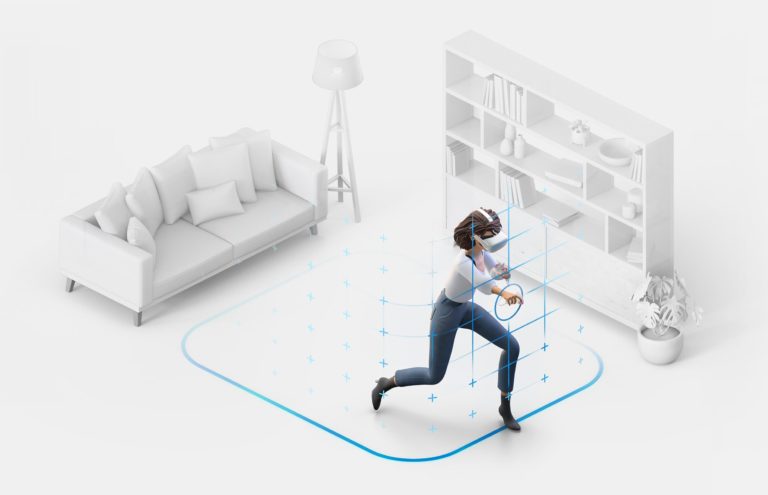
In AR and VR early days, UX and design language standards are still being devised. What are best practices and common playbooks for natural VR interactions? This continues to be a moving target, but ample progress is being made as VR traction gradually ticks upward.
The opportunity in developing compelling VR is to lean into the benefits that virtual worlds offer, such as suspending physics and reality. As we’ve examined, this can include virtual events that let you do things like mute ambient room noise for targeted sidebar discussions.
What are other examples of how this user experience playbook is developing? This was the topic of an AWE panel on VR collaboration – well timed for the age of virtual events and hybrid work. It’s also the topic of this week’s XR talks, with embedded video and takeaways below.
The Playbook
Because VR is so new, so is the playbook for user interactions in virtual space. Altspace VR’s Katie Kelly frames this as an opportunity to learn from users in order to develop that playbook. What does their behavior — or direct feedback — signal for optimal experience design?
This includes everything from how users converse in VR to how they move around a given space to implementing guardrails for abuse and bullying. And as noted, there’s an opportunity to lean into the things that you can only do in virtual spaces, such as mute a given room.
Altspace has done all this by kicking off its social VR platform with known/familiar structures — choosing events in particular as its “container” for social interaction. So it built the experience around things like meetups and educational talks. It then observed user behavior to refine the UX.
What it ended up with was a natural and immersive virtual world that — speaking from experience — is one of the best places to host a VR event. Longer term, its ambitions are broader: a social VR platform that can host gatherings of all kinds. But the familiarity of events is its “training wheels.”
Memory Recall
The concept of leaning into VR’s unique capabilities to suspend reality goes beyond events. VictoryXR’s Steve Grubbs argues that these qualities make VR a natural fit for medical students. Placeshifted interaction is not only convenient but more effective than cadaver learning.
Memory recall can be further boosted through a greater sense of immersion and presence. Here, Grubbs recommends spatial audio so that interactions around an operating table are realistic. These lessons can apply to several areas of skills training beyond healthcare (e.g. retail).
Meanwhile, VR experiences can feel natural and ease people in when they recreate human interaction, says Theia Interactive’s Stephen Philips. This includes things like hand movement. And like Spatial has done, accelerate network effect through cross-platform compatibility.
Lastly, all of the above has been reinforced and accelerated during a pandemic when remote learning and events have been forced. But the real opportunity is to steer VR towards the post-Covid world of hybrid work – applying it selectively in situations where it adds the most value.
We’ll pause there and cue the full video below…






